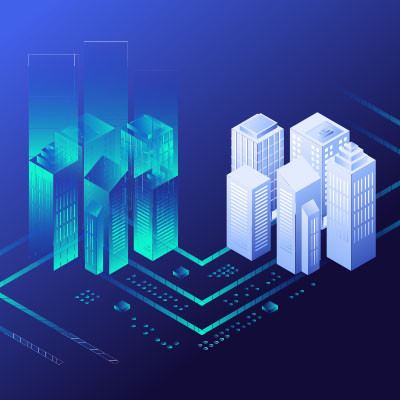Is your business data hard to get to, like it's locked away and only a few people have the key? That can really hold your business back. Imagine if everyone on your team could easily use all the data you create and collect to make better decisions, faster. That's what data democratization is all about, and it’s a powerful tool. In today’s blog we briefly discuss how it works.
Telesys Voice and Data Blog
You might remember the good old days of software, and by “good old days,” we mean “good old days of tedium, installing software on computers one by one.”
Software as a Service, or SaaS for short, has put an end to those days and has made way for better options for SMBs. Today, we want to look into these subscription-based tools and showcase their benefits.
An expiration date helps to make sure you aren’t buying fast-turning foods at the grocery store, and now, the technology industry is making strides to establish a similar standard. A new industry report recommends new legislation pushing for End-of-Life (EoL) disclosure, which would, in theory, allow businesses and consumers alike to make more informed purchasing decisions. What does this mean for your business?
The entire purpose of modern IT is to improve the processes that work requires us to do. Today, we wanted to address a few business priorities—productivity, cybersecurity, and accessibility—that the right tech can help you accomplish, explicitly exploring how different tools can contribute to your success.
A new year is a great chance to look at what your business is doing well and where it can get better. Your technology is one area where there’s usually room for improvement. If you’re thinking about adding new tech this year, here are four questions to help make it a success.
Effective management is crucial for success. One way to achieve this is by using management software. With so many options available, how do you choose the right one? Today’s article explores the different types of management software to help you make an informed decision.
With little fanfare, the AI Wars have begun. When we say “war” we mean just that: a battle for the survival of tools designed to improve human productivity. To start we should rewind a little. Most new software platforms (and many, many established ones) have started to use “artificial intelligence” to improve their products, or at least improve the prospect of selling them. In this week’s blog we will discuss the increased prevalence of “AI” and how some of the largest names in computing have gone all in on the technology.
More small and medium-sized businesses than ever are seeing AI's potential to transform their operations. However, like any technology, AI has its own set of pros and cons. Let's discuss three major advantages and drawbacks you can expect if using it in your business. Hopefully, it helps you make an informed decision about adopting AI.
A digital twin could arguably be seen as a somewhat niche technological innovation. Regardless, they are an invaluable resource to quite a few industries that help the businesses that use them optimize their processes. Let’s go over what a digital twin is, and how it helps a few different business types meet their needs.
Small businesses seemingly always need to take a long look at the way they do things because they need to be as efficient as possible to carve out a market share. This often means using technology to make everything work. There are many different types of technologies that can help any SMB build more efficient operations, but the two we will outline in today’s blog, are two technologies that are probably doing the most to help SMBs improve.
Technology can be a huge benefit or an annoying hindrance for a business. It really depends on how it is maintained or used. Just like the PC in the 1980s, Internet access in the 1990s, and the advent of social media over the past decade or so, there are a couple interesting technologies that, if properly used for business, can bring substantial value for workers, customers, and the organization as a whole. Let’s take a look at three of them.
Both Microsoft and Google offer work profile solutions that are designed to separate personal and professional use on mobile devices. These profiles are commonly used in enterprise settings to enhance security and manageability while allowing employees to use their personal devices for work-related tasks. Here's an overview of work profiles from Microsoft and Google.
Microsoft’s operating systems have been around for a long time, and since Windows 95, Microsoft has published free utilities that can help users make slight adjustments to their operating systems to suit their needs. Microsoft PowerToys are even available now, and we want to explore what they can do for your business, as well as how you can acquire them.
Business technology has grown so much over time that it’s practically unrecognizable compared to some of the original solutions. The Internet of Things has given businesses more opportunities to automate processes and build efficiency into their IT infrastructure, and in more ways than one. Let’s look at how businesses use the Internet of Things and what you might accomplish with it.
In efforts to curb the semiconductor shortage and jumpstart the technology industry, the United States Congress passed legislation that includes funding for manufacturing semiconductors. Partially in response to China’s increasing economic influence and partially in response to the semiconductor shortage, the CHIPS Act could be just what industry leaders need to kickstart the manufacturing of these important devices.
Running a business is stressful, but so is thinking about a future where that business (and its data) no longer exists. If you’re not careful with your preparedness, you could stare down a disaster with no hopes of recovery. This is why we urge you to take proactive action now—so you can prevent these kinds of scenarios from taking your business off the market for good.
I feel like we’ve been talking a lot about the horrifying cybersecurity threats that loom over our heads, and thought it might be nice to really appreciate just how gosh-darn cool some of these devices we all have can be instead.
We’re always talking about boosting productivity and the role your technology has in that quest. What we don’t always talk about is how boosting innovation can help free up your employees to produce better results. It’s the same technology, and it can have multiple benefits. In this week’s blog, we’ll discuss how focusing on how these two thoughts can be one and the same.
For modern organizations that depend highly on their technology, nothing is quite so scary as an event that can completely marginalize its ability to operate. This doesn’t need to be a fire, flood, or some other major cataclysm; it could be something as simple as some of your old IT fails and you’re not ready for it. This week, we thought we’d briefly go through what a catastrophic failure looks like and some steps you can take to keep your business from experiencing one.
Laptops are pretty great, I think we can all agree, simply due to their portability. Having said that, the one-screen situation that laptops bring with them can certainly get in the way of productivity—particularly for those who are used to using more than one. Let’s discuss why an additional display is so helpful, and what your options may be for hooking one up to your laptop.
Mobile? Grab this Article!
Tag Cloud




















